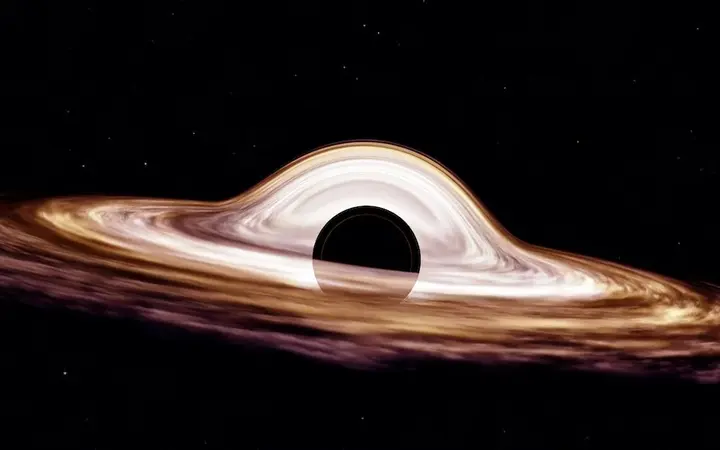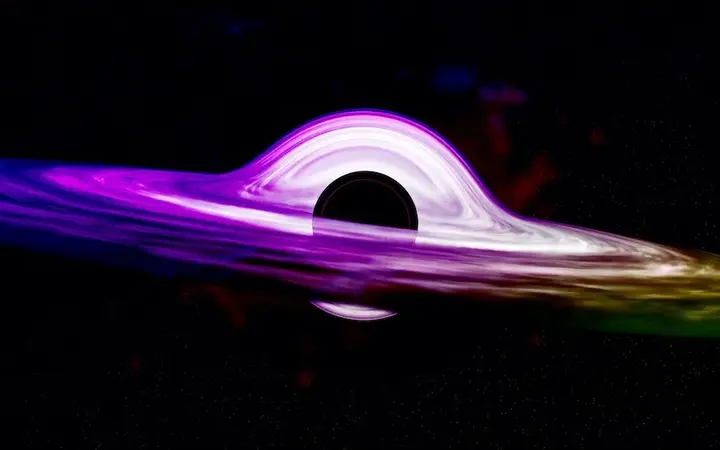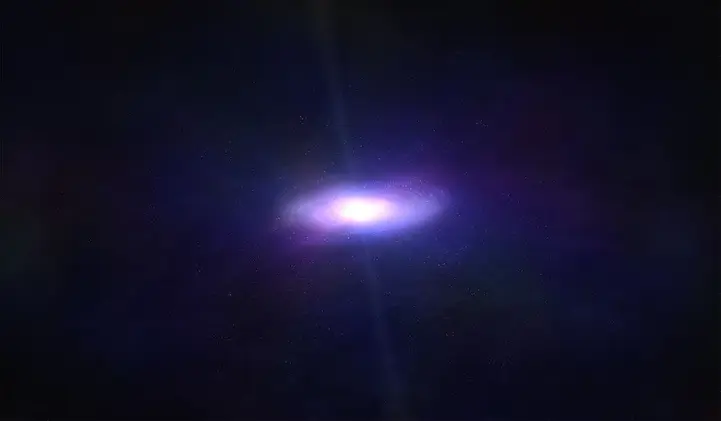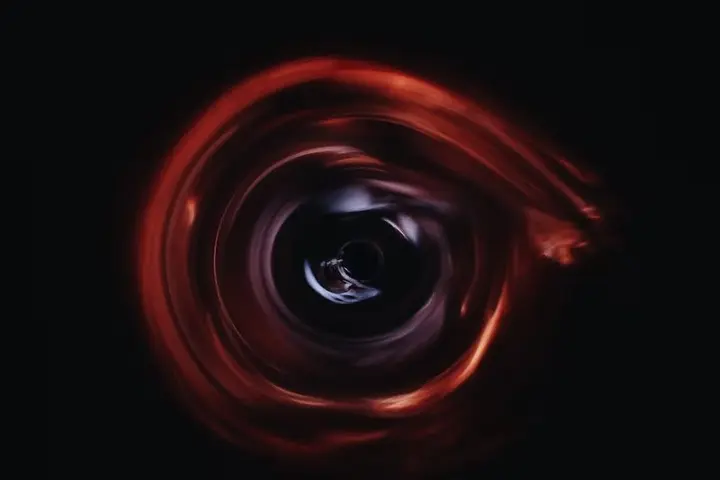The Ultimate Swallowers: Exploring the Voracious Nature of Black Holes

Black holes are one of the most mysterious and exciting manifestations in the universe. They are giant objects with immense gravity that swallow everything that comes close to them, even light cannot escape their voracious grip. Black holes have aroused the interest of scientists and the public alike, as they strive to understand their mysterious and voracious nature. In this article, we'll explore the depth of black holes and discover the secret of that gluttony that makes them terrifying and super-powerful.
Show key points
- Black holes are incredibly massive cosmic entities with gravitational forces so intense that not even light can escape them.
- While often perceived as terrifying and destructive, black holes are natural phenomena governed by the laws of physics, not embodiments of evil.
- Giant black holes possess immense gravitational pull due to their massive size, which enables them to devour vast amounts of matter, including stars and gases.
- ADVERTISEMENT
- The controversial "black sphinx" theory suggests an even deeper level of gravitational malice within black holes, portraying them as ultimate cosmic traps.
- Neutron stars, formed from the collapse of massive stars, can transform into black holes if they exceed a critical mass limit and continue to consume surrounding material.
- The accretion disk around black holes emits powerful radiation, revealing their presence to scientists and offering insights into their voracious behavior.
- The study of black holes remains one of the most compelling areas in astrophysics, as researchers seek answers to the mysteries and extreme forces they represent.
Black holes: are they really the embodiment of evil?

Black holes are considered one of the most surprising and awe secrets of the universe. If we look at it, we see a deep blackness that swallows everything without mercy. The idea may come to mind that these huge masses of darkness are the embodiment of evil itself. Questions may arise: How can such a thing exist in a universe that embraces beauty and harmony? Can nature create something so gluttonous and oppressive?
Recommend
When we look deeply, black holes discover that they are actual terrifying in the universe. Its intense gravitational force makes it a dangerous amusement park for everything that tries to approach it. Black holes are not known for mercy or compassion, but they sweep everything inside and swallow it with shocking slowness. This evil phenomenon is the focus of attention of scientists and researchers who are trying to understand the true nature of these mysterious black masses.
Despite this terrifying characteristic, we cannot unhesitately declare that black holes are the embodiment of evil. Evil and good are human concepts associated with morality and values, while black holes are mere natural phenomena that occur according to the laws of the universe. These laws may be strange and different from what we know in everyday life, but they are only a manifestation of the great universe.
However, we can refer to black holes as terrifying phenomena of enormous power. It has caused the destruction of entire stars and planets, and there are even suggestions that it may distort space-time and distort time. So, we can describe black holes as a mysterious and horrific force that operates according to the laws of the universe that our human minds may not understand.
The shocking force of gravity: how do black holes swallow everything in their path?

When looking at black holes, we are struck by both horror and amazement, as these mysterious beings are able to swallow everything that comes close to them, even the light itself. At the heart of this gluttony lies the shocking force of gravity that makes it unimaginably absorb everything in its path.
These black giants have a huge mass shackled at a very small point, which is known as a black dot. Although this black dot is small, its gravitational force is beyond imagination. When an object approaches a black hole, gravity is dramatically extended, drawing objects irresistibly toward it.
Let's imagine a moment that we are approaching a black hole. You'll feel huge amounts of gravity pull you toward it, and you'll feel every part of your body turn into small slices. The ability of black holes to smash anything that comes close to them, even the hardest and strongest materials, makes them look like super-powerful predators.
Thus, black holes are an amazing example of the effect of the force of gravity on the universe. It reminds us that we are just a small dot in an endless horror of supergravity, and proves that in this vast universe, there is nothing that can escape its terrifying grip.
Giant black holes: does gluttony lie in size?

Giant black holes are considered one of the most exciting and mysterious astronomical objects in the universe. Its sheer size creates a terrifying charm and raises interest and questions about its naturalness and gluttony. So what exactly are giant black holes and how do they differ from small peers? And does its size play a role in increasing its horrific gluttony?
When we talk about supermassive black holes, we're referring to black holes with massive mass. They were formed when the life of giant stars ended and collapsed under the weight of their enormous gravity. Giant black holes are even more stunning when their mass exceeds 20 times that of the Sun, giving them an enormous gravitational field that sweeps away everything in their surroundings.
Giant black holes differ from small analogues in several ways. For example, giant black holes are much larger in size and therefore have an increasingly strong appeal. But the most important question is: does its sheer size mean that it is more voracious?
Rather than looking at size alone in determining the gluttony of giant black holes, other factors should be taken into account. For example, giant black holes may have a huge inverse disk called a "hot disk," which is made up of gases and substances rushing toward them. This hot disk can heat tremendously and produce strong light and X-ray emissions, making it visible to scientists.
Moreover, some believe that giant black holes play a role in the formation and growth of galaxies. The hearts of giant galaxies may be giant black holes sweeping matter and stars around them. Thus, these giant black holes can have a significant impact on the evolution of the galaxy itself.
Important events: the theory of black sphinx and the super-gluttony of black holes

In the world of black holes, important and exciting events come in succession, including the theory of the black sphinx, which revolves around the idea that there is a more vicious chasm in these melancholy entities. This theory is one of the most engaging and controversial theories in astronomy, offering us a look inside the world of black holes and revealing their super-voracious nature.
In the theory of the black hole, the black hole is depicted as a hollow adult in the universe resembling a giant trap. The theory suggests that inside a black hole, there is an enormous gravitational force beyond all expected, and this force can swallow anything that comes close to it, even the light itself does not have enough power to escape the neck of the black sphinx.
The gluttony of black holes is manifested in the theory of the black hole, which is manifested as swallowing huge masses, including gas, dust, and stars, and retaining what they swallow within their inner hole. Here comes the true evil of black holes, and how powerful they are in gravitational palatability and merging with everything in their path.
When we explore the theory of black holes, we find that it shows us one of the most difficult aspects of understanding black holes. It gives us a closer look at the nature of these melancholic entities and reveals the fierce appeal that surrounds them. This theory attracts the interest of scientists and physicists around the world, as they try to understand the strange phenomena and super-gluttony of black holes.
Neutron stars: can they turn into black holes and continue to swallow more and more?

Neutron stars are a supernatural astronomical phenomenon caused by the collapse of a giant star at the end of its life. When a star reaches the end of its nuclear combustion phase, it collapses under the weight of its enormous gravity and turns into a compact, condensed structure known as a neutron star. If the mass of the star is less than what is known as the "white limit," the neutron star will remain stable. But if the mass exceeds the white limit, the neutron star could turn into a black hole.
Black holes are the result of the collapse of a star so massive that their mass becomes an infinitely collapsing center that swallows anything that comes across its path. Black holes are hard to leave due to their massive gravity, but could a neutron star turn into a black hole and continue to swallow more and more?
Scientists believe that it may be possible for a neutron star to turn into a black hole if certain conditions occur and the star accumulates additional mass. When the neutron that makes up the neutron star increases beyond the tubulous forces, it becomes a black hole. Thus, it begins to swallow more and more of the matter and the stars surrounding it.
This process is rare and requires certain conditions and huge amounts of substance to achieve. However, the transition of a neutron star to a black hole would have enormous effects on its surroundings. The massive gravitational increase of the black hole will pull the material out of neighboring stars and swallow it, resulting in the formation of a compact disk of material orbiting the black hole, known as a "discovery disk."
Although a rare hypothesis, the prospect of this phenomenon excites scientists and motivates them to expand their knowledge about black holes and neutron stars. So can a neutron star turn into a black hole and continue to swallow more and more? Perhaps the answer will be in the depths of the dark and mysterious universe.

In conclusion, the eternal question that still baffles astronomers and physicists remains: what is the truth about black holes and what is their voracious nature? Is it really the embodiment of the evil nature of the universe or are there more complex secrets that we need to uncover? Perhaps the day will come when we find definitive answers to these questions, but until then, exploring and studying black holes will remain an exciting challenge that continues to hold scientists and spark humanity's curiosity.
![]()
The Mamluks in the Arab World: History - Importance - Leaders and Decline
The Mamluks, once slave soldiers, rose to rule Egypt and Syria from 1250 to 1517. They defeated Crusaders and Mongols, revived the caliphate, and built stunning architecture in Cairo. Though conquered by the Ottomans, they remained influential, even challenging Napoleon before their final defeat in 1811. more- ADVERTISEMENT
![]()
How to create a small online store for online sales?
Starting an online store is a smart move to sell your products and reach more people. Begin small, focus on unique items, choose a catchy store name, and use easy platforms like Shopify or Wix. Good design, secure payments, solid marketing, and great service are key to your store’s success. more- ADVERTISEMENT
![]()
What is the primary source of oxygen on Earth?
Cyanobacteria were the first to release oxygen through photosynthesis, sparking a massive rise in atmospheric oxygen that wiped out many anaerobic organisms. Today, tiny ocean microbes like Prochlorococcus are major contributors to Earth's oxygen—even more than trees—though most of the planet's oxygen is locked in solid compounds, not the air. more- ADVERTISEMENT
![]()
Quick tips to become a successful salesman
Success in sales comes from knowing your product, understanding customer needs, and building strong relationships. Always listen actively, communicate clearly, and stay passionate. Keep learning, stay organized, and never fear rejection—it’s just part of the journey to closing more deals and reaching your goals. more- ADVERTISEMENT
![]()
The ten most lonely things in the world
The loneliest whale in the world sings at a frequency no other whale can hear. The only tree in a 400 km stretch of desert was hit by a drunk driver. A little robot named Curiosity sings “Happy Birthday” to itself every year on Mars. more- ADVERTISEMENT
![]()
Why do some people attract mosquitoes like magnets, others don't?
Why some popele are Mosquito Magnet, some NOT? more- ADVERTISEMENT
![]()
Daily habits of high achievers: how to build a successful study routine
Daily habits of high achievers: how to build a successful study routine more- ADVERTISEMENT
![]()
Many amazing things your nails can tell you
The Many Surprising Things Your Fingernails Can Tell You more- ADVERTISEMENT
![]()
The AI Revolution: The Impact of Artificial Intelligence on the Labor Market
AI has shaken the job market, replacing routine tasks and saving hours of work. From graphic design to marketing, many roles have evolved or vanished. Still, it’s not the end for humans—AI creates new job opportunities and pushes people to grow, although competition and job security have become tougher than ever. more- ADVERTISEMENT
![]()
Is the Nile the longest river in the world? Amazon would like the word.
The Nile is the world’s longest river- The Amazon would like a word more- ADVERTISEMENT





















